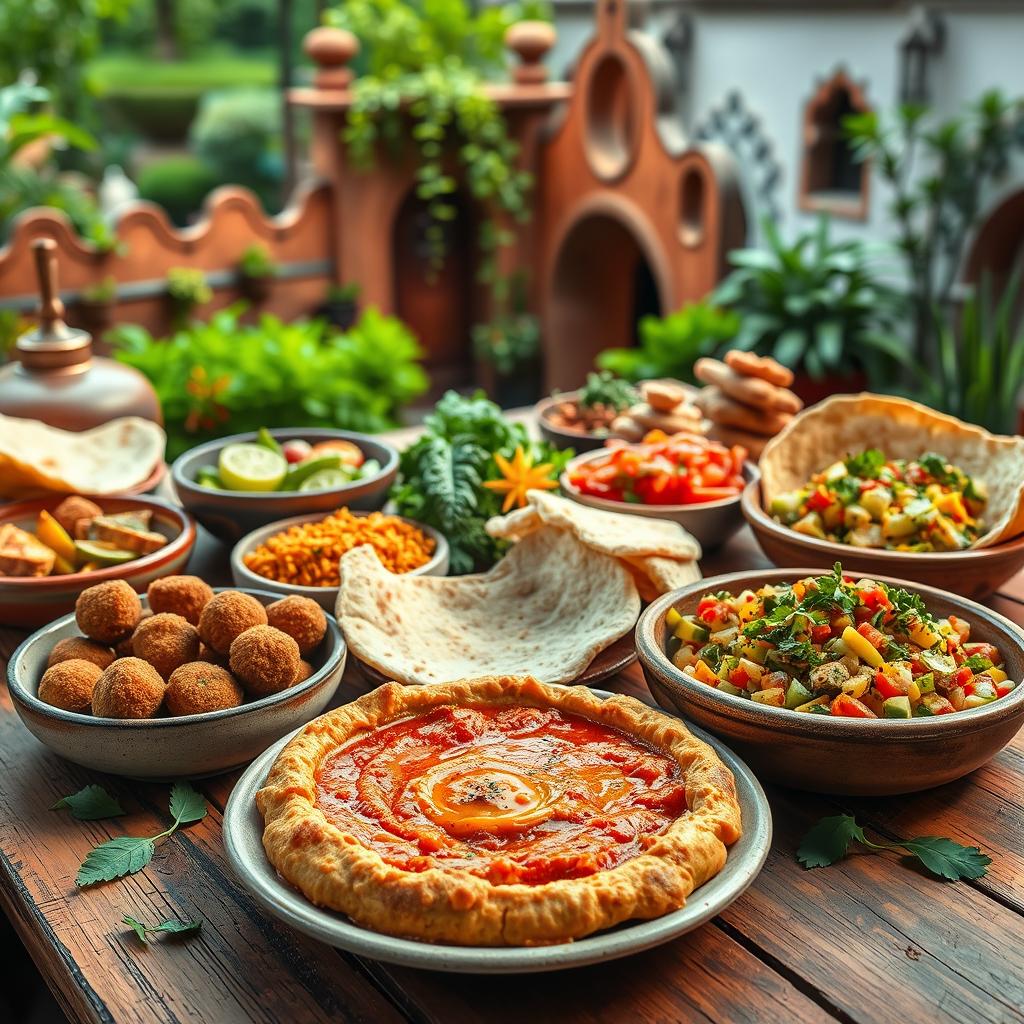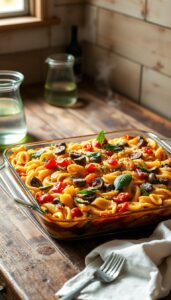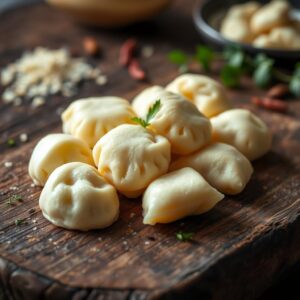vegan middle eastern recipes invite you to explore bold, plant-forward food that feels both familiar and exciting.
Can a handful of pantry spices and simple staples transform your weeknight meals into something memorable?
Many classics rely on olive oil, tahini, pulses, grains, eggplant, and tomatoes to build deep layers of flavor. You’ll find dips, salads, stews, and grain bowls that are naturally vegan and built from ingredients you can buy in U.S. supermarkets.
In this guide, vegan middle eastern recipes show how spices like cumin, coriander, sumac, and za’atar work with preserved lemons and fresh herbs to brighten dishes. Expect practical tips for pantry stocking, crisp roasted chickpeas, and easy weeknight mains that feed your family.
Start here to mix-and-match mezze plates, hearty stews, and simple sides that let plant ingredients shine. For deeper technique, consult reliable sources like the USDA food guides and regional cookbooks to master staples and substitutions.
Key Takeaways
- Plant-forward dishes use pantry staples to deliver big flavors.
- Spices and citrus add depth without complex steps.
- You can shop for key ingredients at U.S. grocery stores and markets.
- Small plates and mezze make flexible menus for family meals.
- Practical tips help you cook smarter and waste less.
Start here: vegan middle eastern recipes you can make today
You can pull together a full, flavorful spread using canned goods and a few fresh herbs. Start with garbanzo beans or lentils, toss them with olive oil, lemon, and garlic, and add chopped tomatoes and cucumbers for a crisp, simple salad.
Many classic dishes are naturally vegan in U.S. kitchens. That means you often skip substitutions and get full flavor with minimal fuss. Build an instant mezze from hummus, roasted veg, and a quick chickpea salad for a perfect lunch.
Quick-start ideas
- Fast chickpea salad with za’atar and sumac — a great perfect lunch and pita filler: sixhungryfeet.com/chickpea-salad.
- One-pan Vegan Shakshuka for brunch or weeknights: avirtualvegan.com/vegan-shakshuka.
- 20-minute couscous or vermicelli rice to round out bowls quickly.
“Use canned garbanzo beans to cut prep time and hand-finished herbs to lift every dish.”
| Staple | Use | Why it works |
|---|---|---|
| Chickpeas / Garbanzo beans | Salads, hummus, toppings | High protein, quick from can |
| Couscous / Bulgur | Bases for bowls | Fast-cooking, soaks up dressings |
| Fresh vegetables & herbs | Salads, garnishes | Add brightness and texture |
| Olive oil, lemon, garlic | Dressings & sautés | Simple flavor foundation |
Pillars of flavor: your vegan Middle Eastern pantry

Stocking a compact pantry of trusted fats, pulses, grains, and bright aromatics makes weeknight cooking simple. Start with a quality olive oil for both sautéing and finishing; the right oil gives body to dressings, dips, and braises.
Olive oil, lemon juice, and garlic: the foundation of bright, bold flavors
Keep lemon juice and peeled garlic on hand to balance richness. A squeeze of lemon and a clove of garlic lifts salads, soups, and grain bowls instantly.
Tahini and sesame: creamy sauces and dressings made simple
Use tahini for quick sauces. Whisk cold water into tahini until it becomes a fluffy emulsion, then add lemon and garlic to taste. It’s a fast way to make hummus-style dips and creamy dressings.
Spices that matter: cumin, coriander, sumac, Aleppo pepper, and za’atar
Build a compact spice kit. Add cumin for warmth, sumac for tang, and za’atar for herbal crunch. These spices let you season vegetables and grains on the fly.
Pulses and grains
Store dried and canned pulses—red lentils, chickpeas, and beans—alongside bulgur, couscous, and freekeh. They form quick bases for bowls and hearty soups.
Fresh herbs and vegetables
Prioritize parsley, mint, tomatoes, cucumbers, eggplant, spinach, and onions. Fresh produce keeps textures lively and brightens preserved-lemons or citrus-forward dressings.
“Stock olive oil you trust and a small spice kit; these small moves deliver big, authentic flavor fast.”
| Pantry item | Primary use | Tip for U.S. shoppers |
|---|---|---|
| Olive oil | Sautéing, finishing | Buy extra-virgin for dressings; use a milder bottle for cooking |
| Tahini | Dressings, hummus | Whisk with cold water and lemon for creamy texture |
| Chickpeas & lentils | Bowls, stews | Buy cans for speed; dried in bulk for cost savings |
| Za’atar, cumin, sumac | Seasoning | Keep airtight jars; label purchase dates |
Vegan middle eastern recipes for mezze, salads, and craveable sides
Build a mezze board that balances creamy dips, crisp salads, and warm, spiced sides for a crowd-pleasing spread. Below are actionable ideas you can make tonight, plus trusted links to tried-and-true methods.
Creamy hummus and baba ganoush
Blend ultra-smooth hummus and smoky baba ganoush with tahini, olive oil, and lemon juice to anchor your mezze. Try this baba ganoush method for smoky depth: sixhungryfeet.
Fattoush and tabouleh
Fattoush gets lift from a sumac-forward dressing and crisp pita. Pair it with an herb-heavy tabouleh for contrast. Use this authentic tabouleh guide to nail proportions: plantbasedfolk.
Quinoa tabbouleh and chickpea salad
Swap bulgur for quinoa to add protein and travel-friendly texture. For a bright lunch, make a chickpea salad with za’atar and sumac. See a quinoa tabbouleh recipe here: chefani, and this chickpea salad method: sixhungryfeet.
Crispy roasted chickpeas and warm sides
Dry chickpeas thoroughly and roast at 375°F (190°C) for 40–45 minutes. Toss with cumin, coriander, paprika, and Aleppo pepper for a crunchy topper or snack. Add Batata Harra and roasted cauliflower with tahini to round out the plate.
“Finish dips with a ribbon of olive oil and a dusting of spices to boost aroma and presentation.”
Hearty mains and one-pot meals packed with authentic flavors

One-pot feasts like maqlouba and tagine turn simple vegetables into memorable centerpieces.
Mujadara pairs lentils, rice, and deeply caramelized onion for a budget-friendly, filling meal you’ll make again and again.
Try mujadara safra — a red-lentil variant with a porridge-like texture that goes well with crisp pita and a bright salad.
Maggmum and tagine, maqlouba and more
Simmer Maghmour (Lebanese moussaka) until eggplant melts into tomato sauce; serve warm or chilled for flexible meals: sixhungryfeet.
For stews and broths, nestle seasonal veg in a Moroccan vegetable tagine or ladle up Vegan Harira for an aromatic, protein-packed bowl: everylittlecrumb.
Build a showstopping vegetable maqlouba by layering roasted vegetables and spiced rice, then flip for a dramatic table reveal.
- Keep Burgul bi Banadoora on rotation for a quick bulgur-in-tomato pot.
- Add falafel and shakshuka as fast, protein-rich weeknight dishes using pantry beans, spinach, and onion.
“Toast spices in oil before adding aromatics and liquid — this small step deepens flavor across these dishes.”
Sweet finishes and essential condiments to elevate every dish
A few fragrant sweets and punchy sauces can turn a simple spread into something memorable.
Sahlab, Basbousa, and Atayef
Sahlab is a warming, dairy-free drink thickened to a spoon-coating texture and dusted with cinnamon. Try the Plant Based Folk version for a U.S.-friendly method and ingredient swaps: https://plantbasedfolk.com/sahlab.
Basbousa, a semolina cake scented with rose water and nuts, makes a moist finish. Atayef are stuffed pancakes glazed with syrup—ideal for festive gatherings and easy to adapt with nut or date fillings.
Toum, Zhoug, and za’atar blends
Toum is a pungent garlic emulsion that lifts roasted vegetables, breads, and salads. Use this recipe to nail texture and punch: https://plantbasedfolk.com/toum.
Keep Lebanese za’atar on hand for dipping or whisking into a simple dressing. It’s a shortcut to layered flavors and an easy way to finish flatbreads: https://plantbasedfolk.com/lebanese-zaatar-recipe.
Matbucha and Muhammara for your mezze
Matbucha—slow-simmered tomatoes and peppers—works as a tangy-sweet side or base for bowls. Muhammara is a smoky walnut-and-red-pepper dip that pairs with pita and crudités. For an American kitchen take, follow this clear guide: https://www.foxandbriar.com/muhammara-recipe.
“Finish dips with a thin stream of olive oil and a tiny pinch of spices to wake up flavors before serving.”
| Item | Primary use | Quick tip |
|---|---|---|
| Toum (garlic emulsion) | White sauce for veg, breads, bowls | Use a neutral oil and blitz cold for stability |
| Za’atar | Dip, dressing, rub | Mix with olive oil for instant flatbread dip |
| Mahammara / Matbucha | Dips & sides | Make ahead; flavor improves after resting |
- Use tahini to make sweet or savory sauces—thin with lemon juice and water to reach desired pouring dressing consistency.
- Fold hummus into a dressing for creamy salads, or serve hummus as the anchor for a mezze plate with crunchy veg and fresh herbs.
- Finish sweets and dips with a thread of olive oil and a dusting of warm spices to boost aroma.
Final Tips for Authentic Vegan Middle Eastern Meal Prep
Let simple technique guide your next meal. Dry chickpeas well before roasting, toast cumin and spices briefly, and finish with a squeeze of lemon and good olive oil to lift every recipe.
You’re set to build bowls and salads anchored in chickpeas, beans, grains, and fresh vegetables. Use condiments like toum and zhoug as quick flavor hacks, or follow a reliable chickpea salad method at sixhungryfeet for fast wins.
Keep a rotation of vegan recipes—roasted chickpeas, mujadara, and bright sides—so you always have a tasty way to feed your family. Taste as you go, adjust oil, salt, and acidity, and enjoy how simple ingredients make memorable middle eastern dishes.




